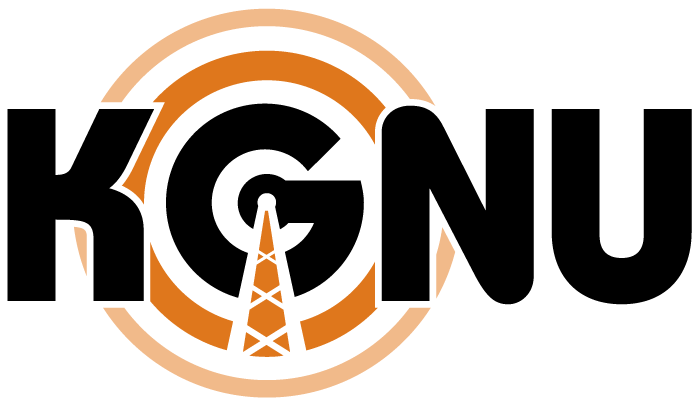The Colorado River is relied upon by roughly 40 million people. That includes members of 30 federally-recognized tribes, as well as residents across seven states. Four of those are in the region known as the Upper Basin – that includes Colorado, Utah, Wyoming, and New Mexico – and the other three are in the Lower Basin – California, Arizona, and Nevada. In Colorado alone, half of Denver’s supply – as well as half of Colorado Springs’ supply – rely on the river.
Tribal nations in Colorado, New Mexico, Utah and Wyoming have been left out of key agreements involving the Colorado River for well over a century now. Earlier this month, the Upper Colorado River Commission – that’s an agency at the nexus of many Colorado River discussions in the Upper Basin – voted to back a new proposed agreement that would make regular meetings with tribes be mandatory for the first time in the group’s 76 year history.
Daniel Cordalis is a staff attorney with the Native American Rights Fund (NARF). He spoke with KGNU’s Jackie Sedley about the status of tribal rights to the Colorado River, and perspectives on the new proposed agreement.
“We want the system to include the unique nature of our water rights in a way that represents the actual nature of our water rights because they’re different than a traditional, not- native water right in this system,” said Cordalis. “And we want to be recognized for that. We want to be able to drive benefits and be able to use it how other folks are able to use their water.”
Listen:
-
 play_arrow
play_arrow
ColoradoRiv Jackie Sedley
Transcript:
Jackie Sedley: Just starting off, running over some practical data. The Colorado River is relied upon by roughly 40 million people. That includes members of 30 federally recognized tribes, as well as residents across the state. seven states. Four of those are in the region known as the Upper Basin. That includes Colorado, Utah, Wyoming, and New Mexico. The other three are in the Lower Basin, California, Arizona, and Nevada. In Colorado alone, half of Denver’s supply In Colorado alone, half of Denver’s supply as well as half of Colorado Spring supply rely on the river. How many tribes of those 30 have recognized water rights and how much of the supply are they allowed to use?
Daniel Cordalis: That’s a tricky question. But it’s the right question. So of the 30 tribes, I would say probably 25 or more have actually recognized quantified rights of some sort. You know, we’d argue as attorneys, of course, that they all have recognized rights, whether or not they’re actually recognized in the states that they’re being used in or functionally used in management decisions is, of course, the tricky part. The Colorado River Basin tribes have approximately just over 3 million acre feet of water quantified right now, which is approximately 25 percent of the annual flow as it’s been the last 20 years.
Sedley: So with that in mind, at this point, and historically, who has had and continues to have the most say in decisions about the future of the Colorado River, including the distribution of its water?
Cordalis: States have always been in control, and it’s been that way purposefully since the 1920s. The state to that point relied on by a very good kind of pragmatic attorney out of Colorado did not want other waters to be recognized exclusively by federal government and have the federal government had too much control. And so they decided to create an interstate compact to divide the waters, which is a constitutional power that courts can use to divide interstate resources.
So they created the 1922 compact, Colorado River Compact, which was states only. The federal government, of course, helped sign that. The federal government does have a significant role here. But ultimately, the states have the rights to that amount of water. The federal government is kind of there as a backdrop for protecting the major federal projects, irrigation and storage projects within the basin.
But the states ultimately kind of regulate and decide amongst themselves how much water they’re going to use and give up, but it’s all based on that that compact. That’s just over 100 years old.
Sedley: As you started off that answer with – it’s no secret that tribal nations in Colorado, New Mexico, Utah and Wyoming have been left out of key in agreements involving the Colorado River for well over a century now. I, I know, – and we’ve talked about it a bit on KGNU’s airwaves – earlier this month, the Upper Colorado River Commission, that’s an agency at the nexus of many Colorado River discussions in the upper basin. So up here in Colorado included, they voted to back a new proposed agreement that would for the first time in the group’s 76 year history, make regular meetings with tribes be mandatory. My question for you is, is what else is or isn’t included in that proposed agreement?
Cordalis: Well, this, it’s a terrific agreement. And I think it really shows how far we’ve come and fairly quickly, at least in the course of a hundred and year management regime of how tribal inclusion is kind of progressing.
What it does is it does require mandatory meetings, which I’ve been going on on a voluntary basis, but also very smart strategic basis, too, for the upper division states to be talking with the tribes who have significant rights in the upper basin, and also rights to water that’s held in storage.
Especially in Southwest Colorado. So what it does is it forces everyone to the table, right? Brings them to a room and I didn’t say force like, in a negative sort of way, but it’s it’s required, right? What it doesn’t do is there’s no agreement on how any of the decisions will be made.
There is no specific process for tribes to have their input recorded into the broader basin discussion. Of course, as we’re talking about the upper Colorado River basin, there’s a lower basin too, which is much more difficult for a lot of reasons. And so what it does is it just creates a meeting and a process framework, which I think of the hope is that we can build from there. I think correctly that a lot of folks realize that this is a congressionally authorized and structured body. And so for actually put tribes into it, kind of voting or a more heightened sort of way would require some legislation, which. Has not been proposed.
Sedley: Are there talks about proposing legislation like that for voting?
Cordalis: Not that I’m aware of, but I’m also not aware of everything.
Sedley: Fair enough. Recent proposals also outlined state’s wishes related to managing the river’s shrinking amount of water, which again is relied upon by about 40 million people. One proposal was by the upper basin. The other lower basin, and the two plans, when you put them together, really reveal the differences and how those states want to divvy up future cuts to their water consumption. The U. S. Bureau of Reclamation will analyze and consider those proposals. But while the state negotiators say they’re committed to finding these compromises, the Southern Ute tribal government is just one of many that I saw spoke out and said that in southwestern Colorado, they don’t believe the proposals address their concerns or help them secure their water future. Can you speak on these proposals from the perspective of some of the involved tribes and any, any opinions or perspectives you’ve heard from them?
Cordalis: So there are 2 proposals, right? You should notice 1 from the lower basin and just put that in context. I mean, California has a significant, just major force in this discussion. They have very large water rights to the lower piece and water. They make very strong claims that that water is being used in ways that the American public needs.
For all the growing that takes place in very Southern California and there, the lower basin is kind of set up very, very differently than the upper basin, because the lower basins water comes from 2 major storage facilities, right? Lake Powell and also Lake Mead.. Of course, in between there is Grand Canyon, but below Lake Mead, everything is very highly regulated and very closely watched the Bureau of Reclamation and Secretary Interior effectively have control and can run the lower river. They’re the water master of the lower part of the river below Lake Mead. And they’ve always received a lot of water. The system’s largely been built on supporting the needs of the lower basin. I don’t think that’s unfair to say. I think that’s true.
We have the major population centers in the basin are there, Phoenix, you know, LA gets some of the water. So there’s a lot of tension about whether or not they are going to continue with getting as much as they have, as opposed to what’s the upper basin is getting. The upper basin argues, well, we don’t think it’s really fair for us to share exactly in the cuts. Lower basins like, well, we should all cut and we should all, you know, share the pain equally on the upper basin is like, well, we take the brunt for what happens every winter. If it snows, we’ll have water. If it doesn’t, then we’re getting cut. We have nothing we can do about that. We don’t have the storage facilities. We don’t have the infrastructure that kind of supports low water years like you do in the lower basin. You have Lake Mead, which is basically a large bank account, which is very, very depleted at the moment, right?
Or it has been but you have that to rely on and we don’t have anything like that. And so you’ll hear Becky Mitchell, especially from Colorado, speak very impassioned saying, you know, we’re kind of subject to the whims of Mother Nature here. There’s not much more we should, we can do. We can’t say we’re going to cut something we don’t necessarily have and we’re going to have, we’re going to, we might lose it anyway, so it doesn’t seem fair for us. Upper Basin states also haven’t developed their water rights as much as the lower basin states have. And so the tension between, the big, big basin, big lower, big upper, is how they’re going to basically share in times of low water years, right? When we have low precipitation, who’s going to feel that the most?
And so it’s a numbers game, like how do we share that? I think tribes for the most part are kind of playing a different game and talking about a different set of rules. We haven’t been able to develop our water.
For the water rights, and this is particularly true in southwest Colorado, tribes have been able to enter into settlements, get some of the water rights quantified, but they haven’t been able to actually use that water because it’s just going to cost a lot more money to do so, it’s a long ways away. The infrastructure costs are just pretty extreme. So there’s a lot of water that’s sitting around for tribes to have basically the tribes earmark on them, but the tribes can’t use. What’s frustrating for a lot of tribes is that, that being true, the tribes can’t control what happens to that water. It is then subject to, let’s say, the Bureau of Reclamation saying, we need that water downstream. So we’re going to release it out of the reservoir, it’s going to go out into Lake Powell, then go to Lake Mead, and so forth. So what tribes really, most of them I think, want to do is they want, is my sense at least, in some of the work that we had done, I had done before joining NARF, ‘what do tribes need access to that they can’t have now?’
A lot of times it’s inclusion in programs or ways that their water rights, which are different than any other water rights on the river, for the most part, can be included in the day to day, month to month, year to year Colorado River management. So it’s really, the tribes are, the voice they’re looking for is not just to sit at the table with everyone, but it’s we want the system to include the unique nature of our water rights in a way that represents the actual nature of our water rights because they’re different than a traditional, non native water right in this system. And we want to be recognized for that. We want to be able to drive benefits and be able to use it how other folks are able to use their water.
So that’s where I think tribes are headed and what they would like. That’s a very different kind of conversation to say more. You know, how do we split up this pie? So there’s almost like a mismatch of kind of focus at the time, but it’s also, there’s also a real opportunity because we have things like this Colorado agreement where states recognize oh yeah, tribes actually have a real, they have an important position and important voice in this.
And maybe this is the best thing to do morally, but also from a basin wide management scheme. That this actually brings more flexibility and empower and makes more stability to the basin.
Sedley: Daniel, thank you so much. I really appreciate it.
Cordalis: Yeah. Thank you.


















